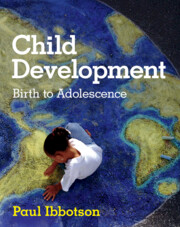Refine search
Actions for selected content:
273 results
Chapter 12 - Algeria and the European Union
- from Part III - Exits
-
-
- Book:
- Colonialism and the EU Legal Order
- Published online:
- 14 October 2025
- Print publication:
- 18 September 2025, pp 267-285
-
- Chapter
-
- You have access
- Open access
- HTML
- Export citation
Nouveau regard sur les déterminants de l’appui à l’indépendance du Québec
-
- Journal:
- Canadian Journal of Political Science/Revue canadienne de science politique , First View
- Published online by Cambridge University Press:
- 12 September 2025, pp. 1-22
-
- Article
-
- You have access
- Open access
- HTML
- Export citation
Introduction
-
- Book:
- The Nation at Sea
- Published online:
- 28 August 2025
- Print publication:
- 11 September 2025, pp 1-12
-
- Chapter
- Export citation

The Nation at Sea
- The Federal Courts and American Sovereignty, 1789–1825
-
- Published online:
- 28 August 2025
- Print publication:
- 11 September 2025
7 - ‘We Got to Take Back Our Country’
- from Part II - Local Dynamics of Decolonisation
-
- Book:
- Global Decolonisation and Non-Sovereignty
- Published online:
- 16 September 2025
- Print publication:
- 31 July 2025, pp 196-231
-
- Chapter
- Export citation
Chapter 11 - Anarchist Media, Cuba’s War for Independence, and the Forging of a Radical Transnational Latinidad, 1880s–1890s
- from Part III - Transgressing
-
-
- Book:
- Latinx Literature in Transition, 1444–1886
- Published online:
- 06 August 2025
- Print publication:
- 17 July 2025, pp 252-270
-
- Chapter
- Export citation
5 - Multiple Continuous Variables
-
- Book:
- Probability and Statistics for Data Science
- Published online:
- 19 June 2025
- Print publication:
- 03 July 2025, pp 161-201
-
- Chapter
- Export citation
12 - Closing Comments and Future Directions
-
- Book:
- Spatial Analysis
- Published online:
- 19 June 2025
- Print publication:
- 03 July 2025, pp 331-360
-
- Chapter
- Export citation
4 - Multiple Discrete Variables
-
- Book:
- Probability and Statistics for Data Science
- Published online:
- 19 June 2025
- Print publication:
- 03 July 2025, pp 109-160
-
- Chapter
- Export citation
6 - Discrete and Continuous Variables
-
- Book:
- Probability and Statistics for Data Science
- Published online:
- 19 June 2025
- Print publication:
- 03 July 2025, pp 202-240
-
- Chapter
- Export citation
1 - Probability
-
- Book:
- Probability and Statistics for Data Science
- Published online:
- 19 June 2025
- Print publication:
- 03 July 2025, pp 6-36
-
- Chapter
-
- You have access
- Export citation

Child Development
- Birth to Adolescence
-
- Published online:
- 19 June 2025
- Print publication:
- 12 June 2025
-
- Textbook
- Export citation
14 - Money in Crisis and the Possible Future
-
- Book:
- Money In Crisis
- Published online:
- 15 July 2025
- Print publication:
- 12 June 2025, pp 353-361
-
- Chapter
- Export citation
2 - Social Medicine in the Arab World
-
-
- Book:
- Medicine on a Larger Scale
- Published online:
- 05 May 2025
- Print publication:
- 22 May 2025, pp 40-59
-
- Chapter
-
- You have access
- Open access
- HTML
- Export citation
Steering the Nation? Drivers, Nationalism, and the Writing of History
-
- Journal:
- History in Africa , First View
- Published online by Cambridge University Press:
- 19 May 2025, pp. 1-21
-
- Article
-
- You have access
- Open access
- HTML
- Export citation
35 - Guarantor (or the So-called “Fourth Branch”) Institutions
- from Part III. A - The State
-
-
- Book:
- The Cambridge Handbook of Constitutional Theory
- Published online:
- 27 March 2025
- Print publication:
- 24 April 2025, pp 603-621
-
- Chapter
- Export citation
6 - The Demise of the League of Nations and the Re-emergence of Colonial Membership at the United Nations
-
- Book:
- An International Anomaly
- Published online:
- 23 March 2025
- Print publication:
- 03 April 2025, pp 254-268
-
- Chapter
-
- You have access
- Open access
- HTML
- Export citation
5 - A Membership Obstructed
-
- Book:
- An International Anomaly
- Published online:
- 23 March 2025
- Print publication:
- 03 April 2025, pp 179-253
-
- Chapter
-
- You have access
- Open access
- HTML
- Export citation
2 - Random Variables and Distributions
- from Part I - Probability Theory
-
- Book:
- Derivatives Pricing
- Published online:
- 08 July 2025
- Print publication:
- 20 March 2025, pp 38-76
-
- Chapter
- Export citation
1 - Probability Spaces
- from Part I - Probability Theory
-
- Book:
- Derivatives Pricing
- Published online:
- 08 July 2025
- Print publication:
- 20 March 2025, pp 5-37
-
- Chapter
- Export citation
